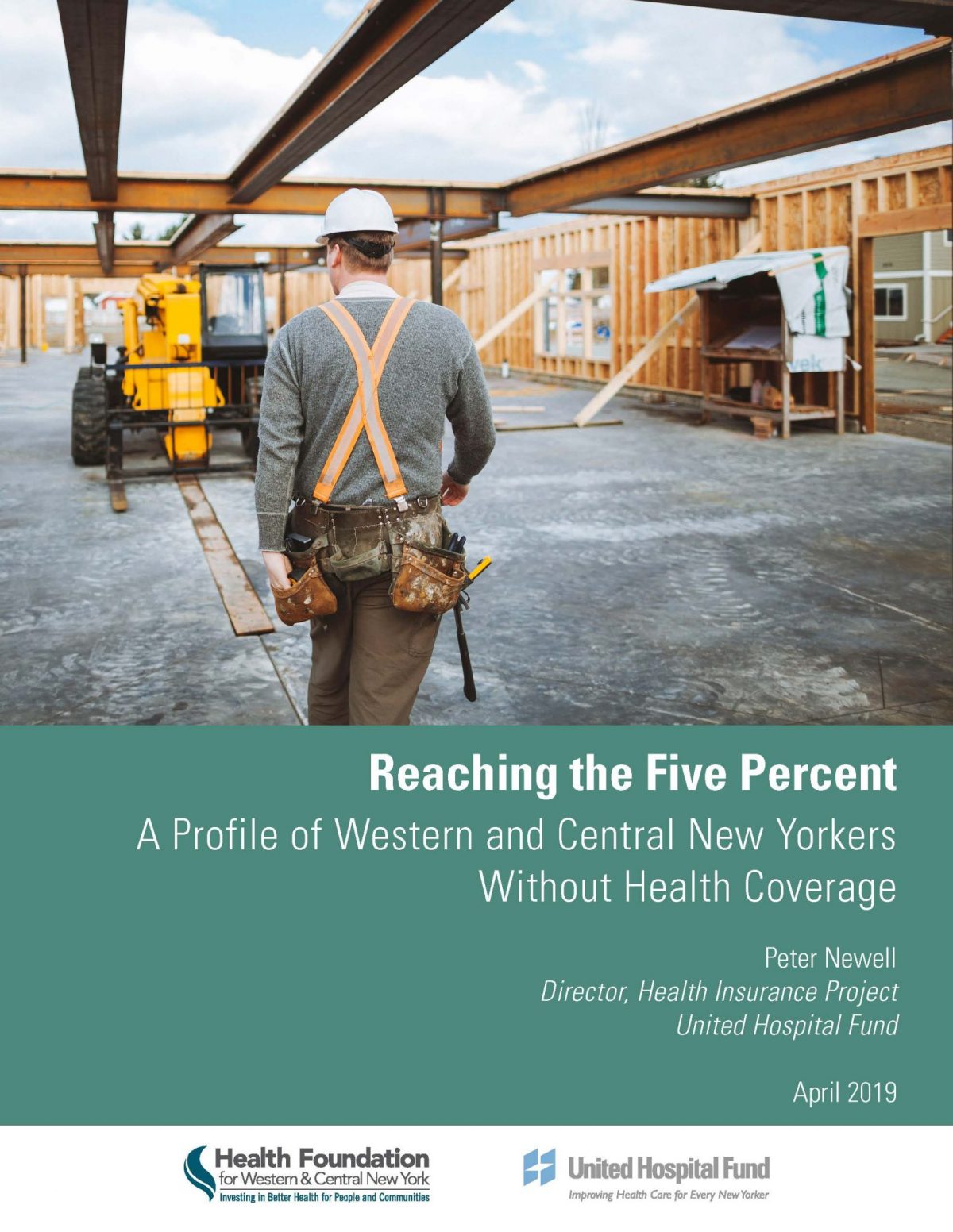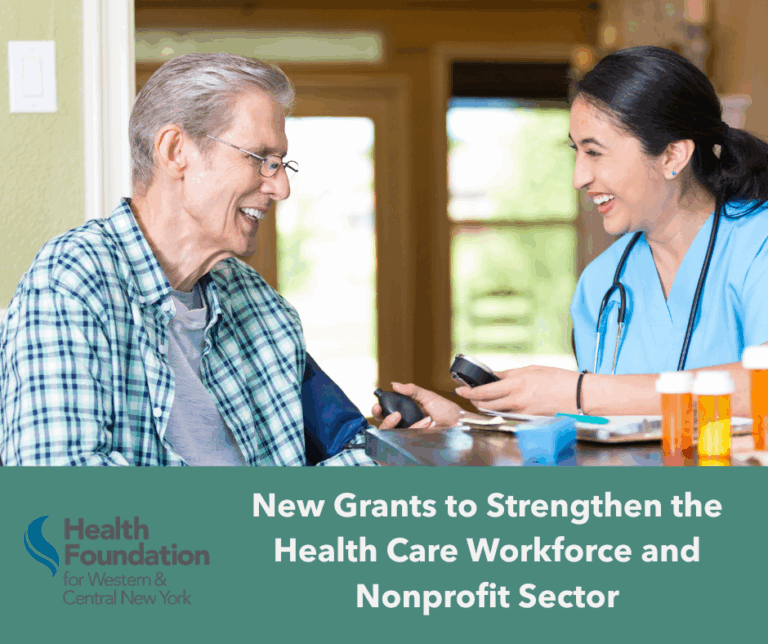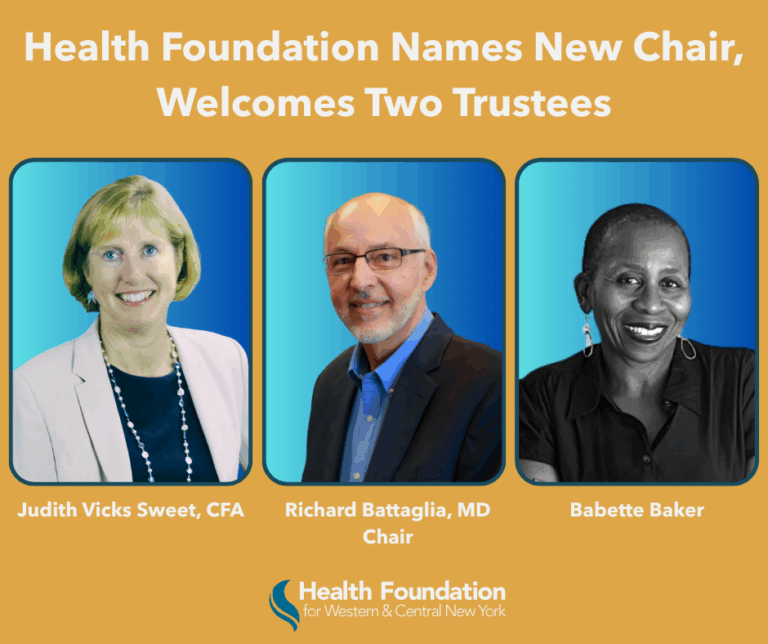New report finds improved outreach, better messaging, and deeper subsidies would help boost coverage, residents say
BUFFALO, NY and NEW YORK, NY—April 23, 2019—While New York’s overall uninsured rate is hovering at just over five percent, many of the uninsured in western and central New York are likely income-eligible for public coverage or financial assistance. Broader outreach, improved messaging, and deeper subsidies for middle-income New Yorkers could help improve coverage rates, according to a report released today by the Health Foundation for Western & Central New York and United Hospital Fund (UHF).
The report, Reaching the Five Percent: A Profile of Western and Central New Yorkers Without Health Coverage, includes a census data analysis that maps the uninsured rate by age and income in 16 western and central New York counties, as well as real-life stories from the uninsured and from some who recently gained coverage. The report was supported by the Health Foundation and prepared by UHF.
“Despite the progress we’ve made under the Affordable Care Act, far too many New Yorkers without coverage live each day with the dread of a ruinous accident or illness,” said Nora OBrien-Suric, PhD, president of the Health Foundation. “This report provides a road map for where more resources are needed, a number of common-sense policy approaches to close the gap, and poignant voices from real people that both amplify the data findings and call on us to act.”
According to the data analysis and voices highlighted in the report:
- Estimated uninsured rates varied greatly among counties. In western New York, about 8.7 percent of Allegany residents lacked health coverage, while just over 3 percent of Erie County residents were uninsured.
- Although citizenship status and household composition can affect eligibility for public coverage, many uninsured central and western New Yorkers had incomes that would make them eligible for free or low-cost public coverage through Medicaid, Child Health Plus, or the Essential Plan. Coverage rates among counties again varied significantly; for example, only about 12 percent of the total uninsured in Cayuga County had incomes within Medicaid eligibility limits, but over 30 percent of Oswego County’s uninsured did.
- Discussion group participants eligible for free or low-cost public coverage were very satisfied with their benefits. However, many of those earning too much for Medicaid and the Essential Plan but who are eligible for subsidies for Qualified Health Plans through the Marketplace still found coverage to be too costly, or of limited value, given high deductibles and copayments.
- Participants found the enrollment process to be very complicated and recommended several steps that could increase access: increased outreach; publicizing the availability of free, one-on-one counseling to help consumers through the enrollment process; broader messages to counter the lingering stigma associated with public coverage; and deeper subsidies that would lower out-of-pocket costs for Qualified Health Plans purchased on the Marketplace.
“This collaboration with the Health Foundation gave us an opportunity to hear firsthand about the health care needs of upstate New Yorkers, to be educated by local experts, and to learn more about insurance markets in diverse communities such as Gowanda and Syracuse,” said Anthony Shih, MD, MPH, and president of UHF. “The voices captured here remind us of the consequences of living without coverage, and command us to take steps to improve access to coverage—even as the national debate on how best to meet that goal continues.”
Data analysis in Reaching the Five Percent is based mainly on the U.S. Census Bureau’s 2017 American Community Survey (one-year and five-year estimates). It is organized by region and county, by age, and by income categories corresponding to eligibility for state or federal health care programs. The stories in this report came from discussion groups organized by UHF and local health care organizations in November 2018. About 40 residents participated in these discussions, which took place in Homer (Cortland County), Syracuse (Onondaga County), Gowanda (Erie/Cattaraugus Counties), and Wellsville (Allegany County).
Reaching the Five Percent was written by Peter Newell, director of UHF’s Health Insurance Project, with research assistance from Mandy Miller, 2019 Dartmouth College MPH candidate.
The full report can be downloaded here.



